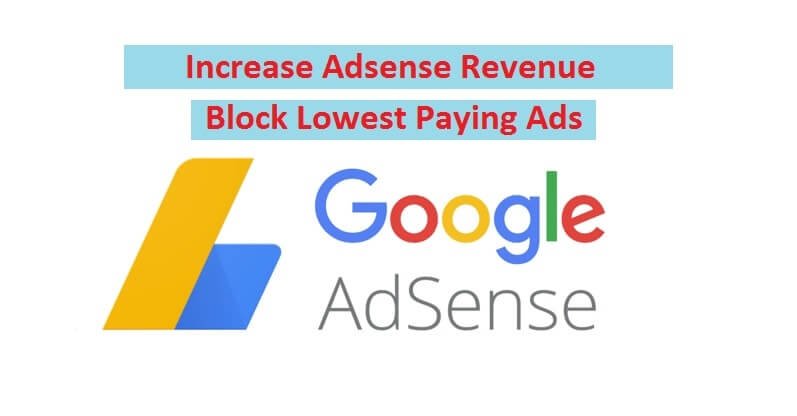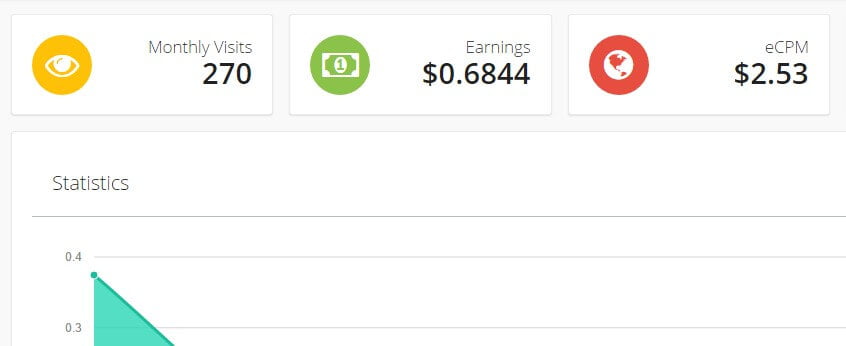Google AdSense is a powerful advertising program developed by Google, offering website owners and content creators the opportunity to monetize their online platforms. Whether you run a blog, website, or video channel, AdSense enables you to earn revenue by displaying relevant and targeted advertisements. In this comprehensive guide, we’ll delve into the intricacies of Google AdSense, from its fundamental principles to effective strategies for maximizing your earnings.
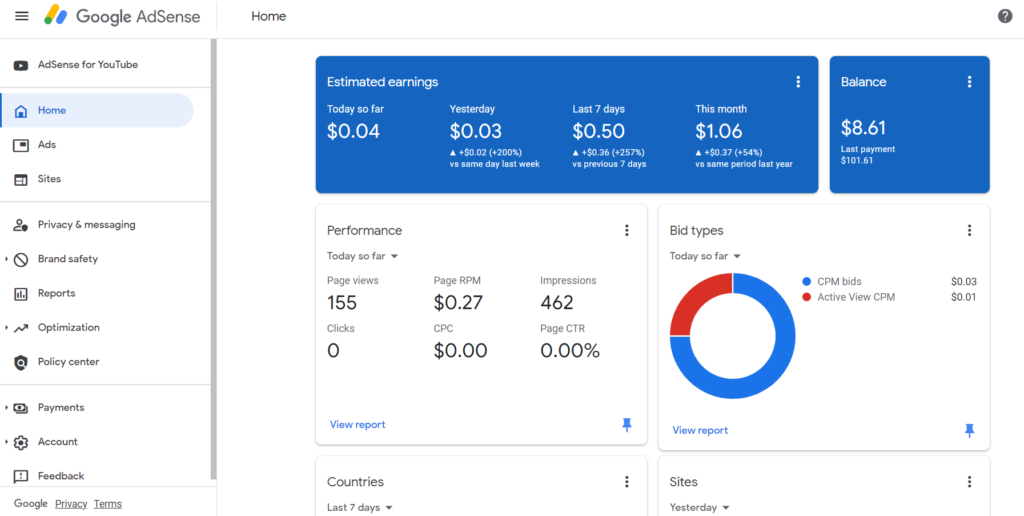
Understanding Google AdSense:
1. What is Google AdSense?
Google AdSense is an advertising program that allows website owners and publishers to display ads on their online content. It operates on a pay-per-click (PPC) or pay-per-impression (CPM) model, providing a stream of income for publishers based on user interactions with the ads.
2. How Does It Work?
Advertisers bid to display their ads on the Google AdSense network. Google uses an automated auction system to determine which ads to display and where. When visitors interact with these ads on a publisher’s site, the publisher earns a portion of the advertising revenue.
Key Components of Google AdSense:
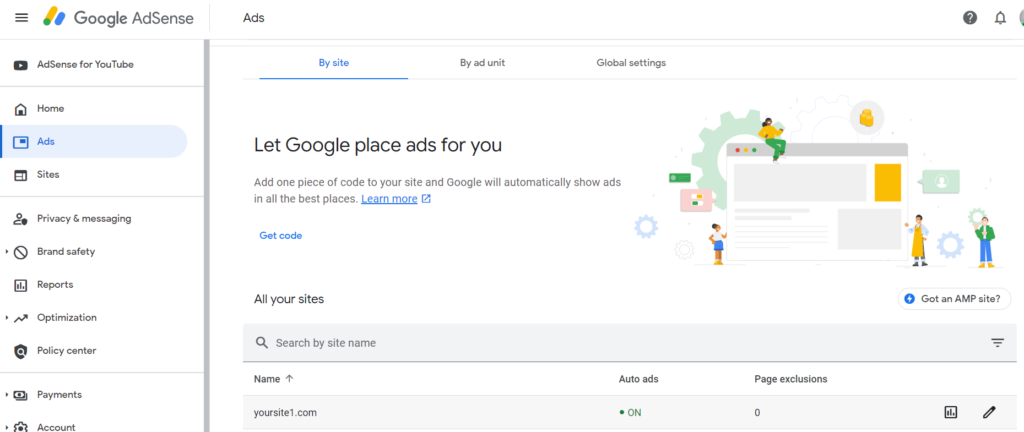
1. Ad Units:
Ad units are the individual ad blocks that you place on your website. These can come in various formats, including display ads, text ads, link units, and more. Google AdSense provides a range of customizable ad units to suit different layouts.
2. Advertisers and Ad Inventory:
Advertisers create ads and bid on ad space within the Google AdSense network. The more competitive the bid, the higher the chance their ads will be displayed on your site. Google AdSense manages the ad inventory and ensures that relevant ads are shown to your audience.
3. Earnings:
Publishers earn revenue through clicks (CPC) or impressions (CPM) on the displayed ads. The amount earned varies based on factors like the niche, geographic location of your audience, and the competitiveness of the ad market.
4. Payments:
Google AdSense pays publishers on a monthly basis. Payments are typically made via direct deposit or check, and thresholds must be met before a payment is issued.

Getting Started with Google AdSense:
1. Eligibility:
To join the Google AdSense program, you need a website or platform with original content that complies with AdSense policies. The content should also adhere to Google’s webmaster quality guidelines.
2. Application Process:
- Create a Google AdSense Account:
- Visit the Google AdSense website and sign up.
- Website Verification:
- After signing up, submit your website for review. Google will assess your site’s content, design, and adherence to policies.
- Ad Code Placement:
- Once approved, you’ll receive ad code. Integrate this code into your website’s HTML where you want ads to appear.
3. Ad Customization:
Explore the various ad formats and customize them to match your website’s aesthetics. AdSense offers responsive ads that adapt to different screen sizes, ensuring a seamless user experience.
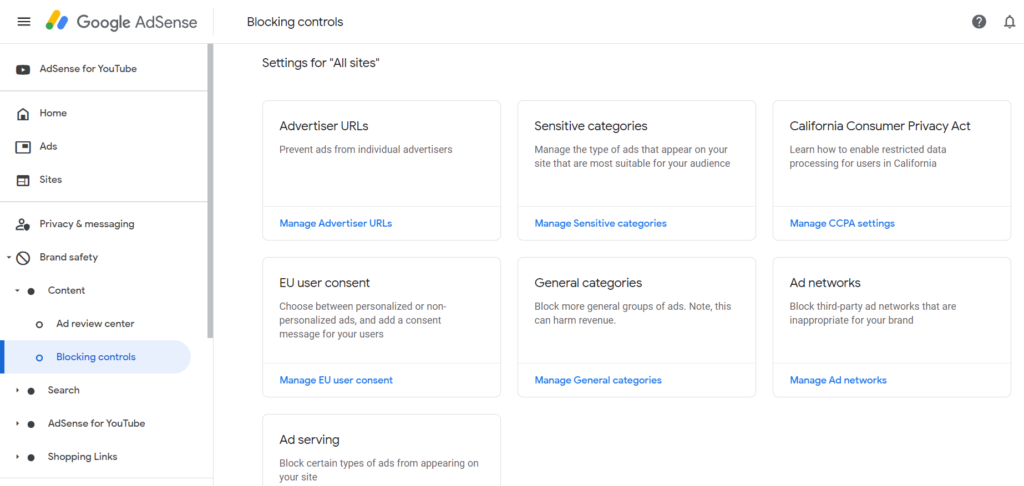
Optimizing Your Google AdSense Strategy:
1. Ad Placement:
Strategically place ads where they are likely to be noticed, such as within content, near the top of the page, or alongside navigational elements.
2. Ad Types:
Experiment with different ad types (display, text, link units) to find what resonates best with your audience. Consider using responsive ads to accommodate various device sizes.

3. Ad Style and Colors:
Customize the style and colors of your ads to match your website’s theme. Blending ads seamlessly with your content can enhance user engagement.
4. Monitor Performance:
Regularly check your AdSense account for performance metrics, including click-through rates (CTR), earnings per click (EPC), and impressions. Analyzing this data helps you optimize your strategy.
5. AdSense Policies:
Adhere to Google AdSense policies to maintain a healthy and compliant account. Violations can lead to penalties, including account suspension.

Experiments
In the context of Google AdSense, experiments typically refer to A/B testing or split testing different elements of your ads to optimize performance. A/B testing involves comparing two versions of an ad to see which one performs better. This can help you make data-driven decisions to improve click-through rates (CTR), revenue, and user engagement. Here’s a brief overview of how you can conduct experiments in Google AdSense:
- Define Your Goal: Clearly define the goal of your experiment. It could be to increase click-through rates, improve ad viewability, boost revenue, or achieve any other specific objective.
- Identify Variables: Choose the elements you want to test. Common variables include ad sizes, ad types, colors, text, placement, and ad styles. Ensure that you change only one variable at a time to accurately determine its impact.
- Create Multiple Ad Units: Duplicate your ad unit and make the desired changes to the variable you’re testing. For example, if you want to test different ad sizes, create two ad units with different sizes.
- Use Google AdSense Experiments: Google AdSense provides an Experiments feature that allows you to run A/B tests directly within the AdSense interface. You can find this feature in the “Optimization” tab. Set up your experiment, define the control and experiment groups, and specify the percentage of traffic to allocate to each group.
- Monitor Performance: Keep a close eye on the performance metrics during the experiment. Metrics such as CTR, RPM (revenue per thousand impressions), and overall revenue are crucial. Give the experiment enough time to gather sufficient data for meaningful analysis.

- Evaluate Results: After the experiment has run for a sufficient duration, analyze the results. Compare the performance metrics of the control group with the experiment group. Determine which variation performed better in achieving your defined goal.
- Implement Changes: If the experiment shows a clear winner, implement the changes on a broader scale. For example, if a larger ad size resulted in higher CTR, consider using that size for your ads going forward.
- Iterate and Test Again: A/B testing is an ongoing process. Once you implement changes, continue to test and refine your ad strategy. Regular experimentation is key to optimizing your AdSense performance over time.
Conclusion:
Google AdSense provides a lucrative avenue for content creators to monetize their websites and online platforms. By understanding the program’s fundamentals, optimizing your ad strategy, and providing value to your audience, you can unlock the full potential of Google AdSense and turn your online presence into a sustainable source of income. Happy monetizing!
